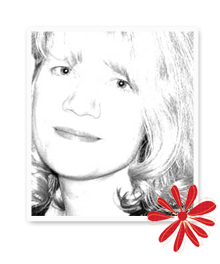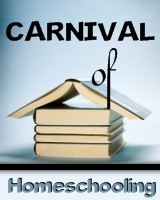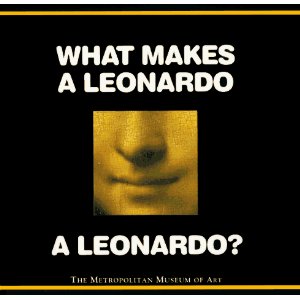Retells, or narrations, are trending in our house lately. Charlotte Mason, through her writings from the late 1800's, has convinced me of the value of asking a child to retell something in his own words. These narrations are sprinkled throughout the week now and the fit seems to be a good one for Max. It's his natural inclination to explain things anyway (in great detail sometimes) - many children like to do this! Is your child one of them? So why not open up that door and let him or her happily explain something to the nth degree as you listen attentively in bursts of focused attention?
Retells come in many shapes and sizes. Some kids practically write their own novel on paper as they narrate a chapter or two from a good book. Others fill sketch books with drawings from their imaginings about what the story told them. Children like to speak into a microphone to narrate and then hear their voices played back to them, too. What better way to record their precious voices before, during and after the maelstrom of hormones hits? Max prefers to speak his narrations, but encouraging him to draw it out or put it on paper in words is worthwhile for him, too. Sometimes he dictates and I type. Other times he will transfer this flow of words that tumble so forthrightly out of his mouth onto paper, but it is frustrating for him since his hand does not transfer to paper nearly quick enough what he is thinking. In an instance like this, listening to a dictated recording of his retell might prove useful because he can stop the recording as needed.
The main objective is to help him organize his thought process and learn to focus on a story line from an author worth focusing upon. Ms. Mason championed this task in helping the child to own the information, to really take it in, to KNOW it. I really do resonate with many of her philosophies and it will be fun applying them to our current world in a secular fashion.
Here are some books we are using for retells at the moment. I don't ask Max for a narration every time we read or he reads; it is more random than that and after awhile you'll get a feel for the flow of it.
Beautifully written. We are deep in the jungle with Mowgli, Baloo and Bagheera, too.
This particular edition contains the many drawings of Mr. Seton's that are so cherished by readers of his work. Not for the faint-of-heart. This is Mother Nature in raw form at times. Warning: please see a more recent
post that may nix this book from your list or possibly give you some potent material to work with discussion-wise. Remember, my opinion. Others see this book differently than I do.
Stumbled upon this in the library and it was the orangutan that got my attention, truth be told. Turned out to be a quirky book written with humor and weirdness and accurate history, too. Max ate it up, but he won't do a narration on it because he thinks I should read it first. To avoid spoilers, I guess.
Began this one today with a retell of the first chapter about Thales, the Greek mathematician who figured out how tall the Great Pyramid is in Egypt. I'm assigning chapters and asking for retells now and then. Today he drew a stick figure Thales next to the pyramid and explained to me how to determine the height of the pyramid with the information that was available. Smart guy, that Thales.
This will likely be a continued theme for us. Max seems to be taking to it naturally; it's my job to continue to provide him with good, if not grand, reading material and to encourage him to know the information and decide for himself if it works in Max's world.
If you are curious about Charlotte Mason's philosophies, please Google her. Keep in mind that the words straight from her pen are the most helpful, albeit a bit archaic as you have to slog through some Victorian writings; there are many people who seem to put their own agenda stamp over her ideas and thus a myriad of websites and blogs have sprung up which attempt to harness her voice. Her ideas speak for themselves - if you can get your hands on some good and fair summations of her ideas and then work your way over to her original words and slowly digest them, you'll be off to a good start. Hers is a gentle, kind and wonderful approach that can be tailored to fit your needs.
Keep in mind, too, that Charlotte had time to sit and think. She did not have children of her own and she probably had help with tasks like cleaning and cooking, so her expectations of mothers in her writing can be daunting. If you're a mom who doesn't have a governess, a cook and a gardener and who is homeschooling - be kind to yourself!! Put her words in context.
If you are interested in viewing her philosophies through a secular lens, it will take some work on your part; you can begin by accessing this blog for help:
http://secularcm.com/. I also read Penny Gardner's
secular handbook about the Charlotte Mason method of schooling.






































